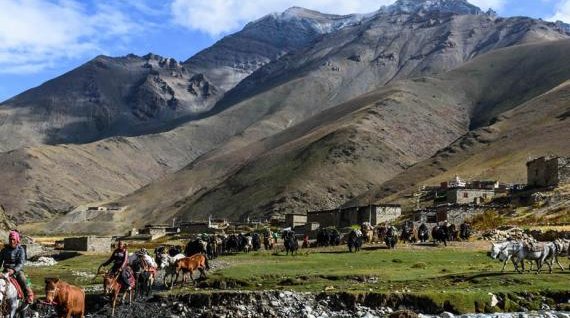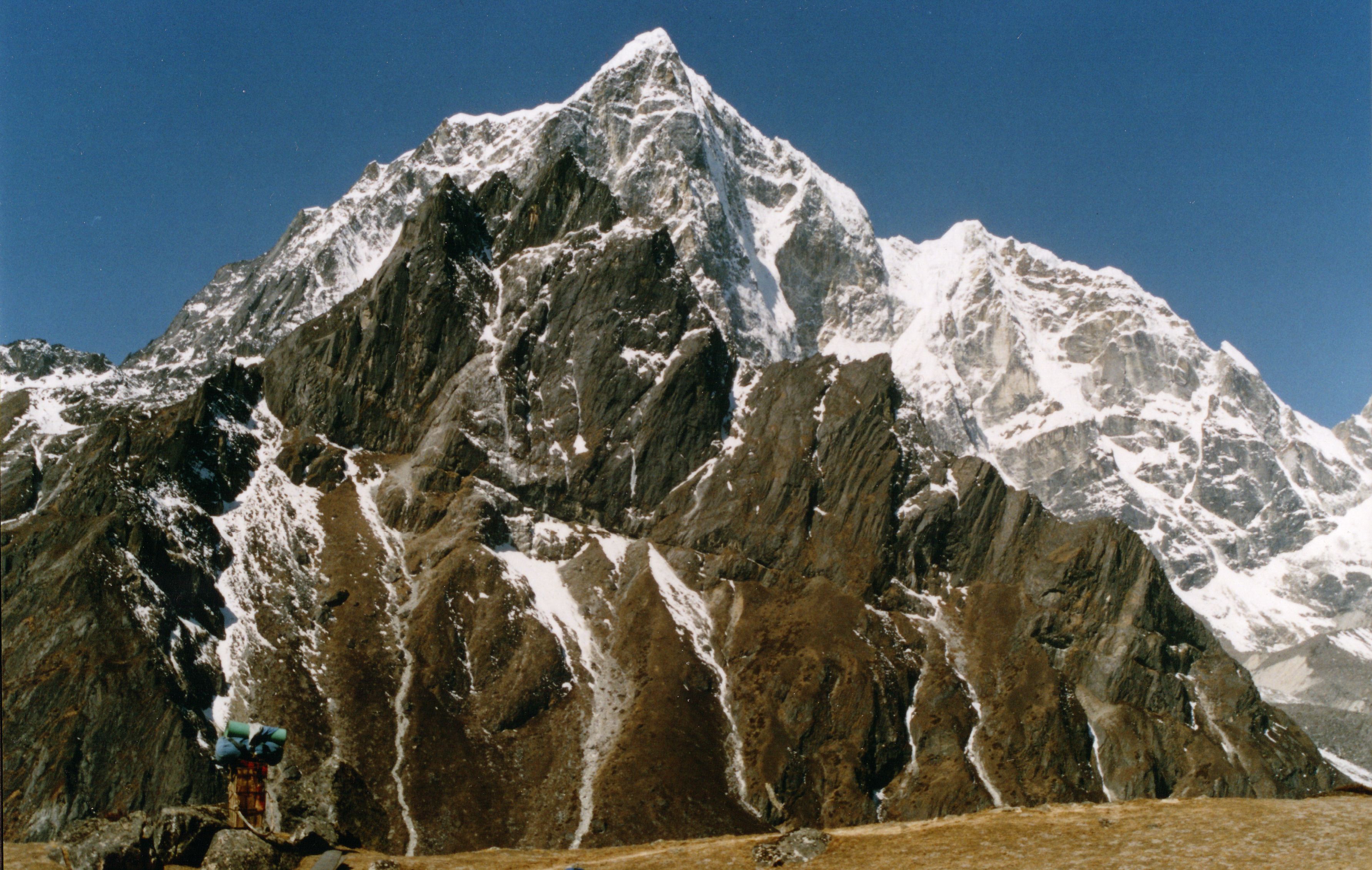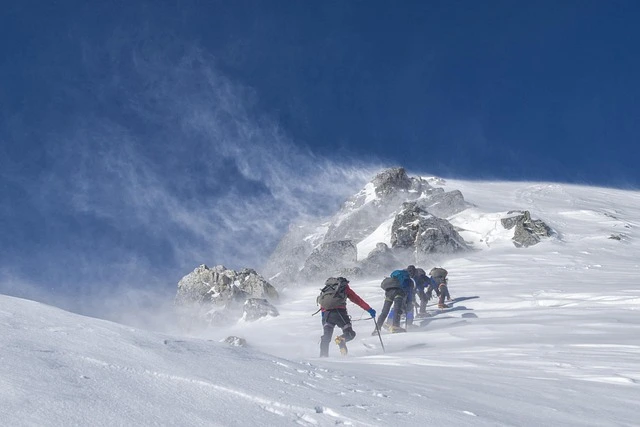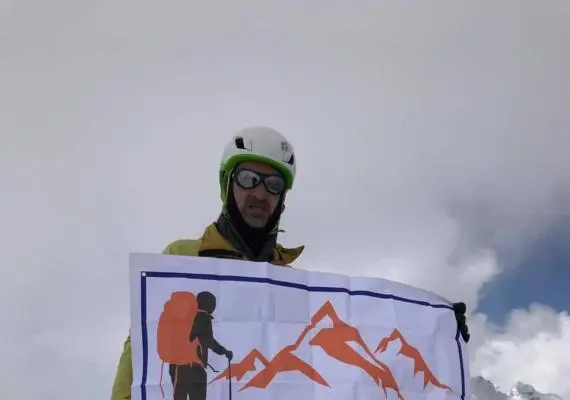The Upper Dolpo Trek takes you into one of the most isolated and culturally preserved regions on Earth, where ancient Tibetan Buddhist traditions flourish in a landscape that seems frozen in time. This extraordinary journey through Nepal's hidden trans-Himalayan region reveals turquoise lakes, snow-capped peaks towering above 6,000 meters, and villages where people still follow centuries-old customs, offering adventurous trekkers an experience that transcends typical mountain tourism to become a profound cultural and spiritual journey.
Beyond the already remote Lower Dolpo, the Upper Dolpo Trek ventures into truly forbidden territory - a restricted area where annual visitor numbers rarely exceed a few hundred, preserving an authentic way of life that has vanished elsewhere in the Himalayas. From crossing high mountain passes where snow leopards roam to sharing yak butter tea with nomadic herders, this 26-day expedition through the roof of the world delivers adventures that redefine what remote trekking means in the 21st century.
Trip Highlights
- Cross spectacular Kang La pass at 5,360m with breathtaking views of Dhaulagiri range
- Explore the mesmerizing turquoise waters of Shey Phoksundo Lake
- Visit ancient monasteries including Shey Gompa and Yangze Gompa
- Trek through authentic remote Tibetan villages unchanged for centuries
- Experience the unique pre-Buddhist Bon culture still practiced in Dolpo
- Walk through Shey Phoksundo National Park, prime snow leopard habitat
- Witness dramatic views of Kanjiroba Himal and Crystal Mountain
- Stay in wilderness camps under star-filled skies at extreme altitudes
- Follow ancient salt trading routes between Tibet and Nepal
- Encounter blue sheep, Himalayan tahr, and rare wildlife
- Visit the legendary Crystal Mountain sacred to Buddhists
- Experience complete isolation in one of Earth's most remote inhabited regions
Short 26-Day Itinerary
- Day 1: Arrive Kathmandu, transfer to hotel, trek briefing
- Day 2: Kathmandu sightseeing and permit processing
- Day 3: Fly Kathmandu to Nepalgunj - 1 hour flight
- Day 4: Fly Nepalgunj to Juphal (2,320m), trek to Dunai (2,850m) - 3 hours
- Day 5: Dunai to Ankhe (2,896m) - 5-6 hours trekking
- Day 6: Ankhe to Sulighat (3,500m) - 5-6 hours
- Day 7: Sulighat to Phoksundo Lake (3,611m) - 4-5 hours
- Day 8: Acclimatization day at Phoksundo Lake - explore Ringmo village
- Day 9: Phoksundo Lake to Phoksundo Khola (3,507m) - 4-5 hours
- Day 10: Phoksundo Khola to Phoksundo Bhanjyang (4,120m) - 6-7 hours
- Day 11: Phoksundo Bhanjyang to Yak Kharka (4,450m) - 5-6 hours
- Day 12: Cross Kang La Pass (5,360m) to Shey Gompa (4,500m) - 7-8 hours
- Day 13: Rest and exploration day at Shey Gompa and Crystal Mountain
- Day 14: Shey Gompa to Namduna Gaun (4,830m) via Saldang La - 6-7 hours
- Day 15: Namduna Gaun to Saldang (3,756m) - 4-5 hours
- Day 16: Exploration day in Saldang - visit villages and monasteries
- Day 17: Saldang to Yangze Gompa (4,960m) - 4-5 hours
- Day 18: Yangze Gompa to Sibu (4,560m) - 6-7 hours
- Day 19: Sibu to Jeng La Phedi (4,900m) - 5-6 hours
- Day 20: Cross Jeng La Pass (5,090m) to Tokyu Gaon (4,290m) - 5-6 hours
- Day 21: Tokyu to Dho Tarap (4,040m) - 4-5 hours
- Day 22: Rest day in Dho Tarap - explore monastery and village
- Day 23: Dho Tarap to Tarap Khola (3,800m) - 7-8 hours
- Day 24: Tarap Khola to Khanigaon (3,150m) - 6-7 hours
- Day 25: Khanigaon to Dunai, fly to Nepalgunj and Kathmandu
- Day 26: International departure day
Understanding the Upper Dolpo Region
The Upper Dolpo Trek represents the pinnacle of remote Himalayan trekking, taking you into a region so isolated that many villages didn't see their first foreign visitor until the 1990s. This restricted area, immortalized in Peter Matthiessen's "The Snow Leopard" and Eric Valli's film "Himalaya," preserves a way of life that has remained virtually unchanged since medieval times.
The landscape here defies expectations - instead of lush valleys, you'll find arid mountains reminiscent of Tibet, with colorful rock formations, deep gorges, and vast plateaus where only the hardiest vegetation survives. The region's location in the rain shadow of the Dhaulagiri and Annapurna ranges creates a unique high-altitude desert ecosystem within Shey Phoksundo National Park, Nepal's largest national park and a crucial habitat for endangered species.
What makes this trek truly special is the combination of challenging terrain and profound cultural encounters. The people of Upper Dolpo, numbering fewer than 5,000, maintain traditions including polyandry, sky burials, and the ancient Bon religion that predates Buddhism. Their resilience in one of Earth's harshest environments offers inspiring lessons about human adaptability and community cooperation.
Cost and Accommodation Details
Understanding Upper Dolpo trek cost is essential for planning this premium adventure:
Permit Requirements and Fees
Upper Dolpo Restricted Area Permit:
- First 10 days: USD 500 per person
- Additional days: USD 50 per person per day
- Total for 26-day trek: USD 1,300 per person
- Only available through registered agencies
Additional Permits:
- Shey Phoksundo National Park: USD 30 per person
- TIMS Card: USD 20 per person
- Lower Dolpo Permit: USD 30 (if entering via standard route)
Complete Package Pricing
Standard Package (USD 4,500-5,000 per person):
- All Upper Dolpo permits and documentation
- Experienced guide familiar with restricted areas
- Cook and kitchen crew
- Porter service (1:1 ratio recommended)
- Complete camping trek equipment
- All meals during trek (3 meals + tea/coffee)
- Domestic flights (Kathmandu-Nepalgunj-Juphal)
- Basic medical supplies
Premium Package (USD 5,500-6,500 per person):
- Everything in standard package
- Senior guide with Upper Dolpo expertise
- Assistant guide for larger groups
- High-quality camping equipment
- Satellite phone for emergencies
- Portable altitude chamber
- Helicopter evacuation insurance
- 4-star Kathmandu accommodation
- Flexible itinerary options
Luxury Package (USD 7,000+ per person):
- All premium inclusions
- Private trek arrangement
- Gourmet meal options where possible
- Professional photography guide available
- Cultural expert accompaniment
- Helicopter return option from Dho Tarap
- Premium camping equipment
- Comprehensive medical support
What's Not Included:
- International airfare
- Nepal visa fees
- Personal trekking gear
- Travel insurance (mandatory)
- Alcoholic beverages
- Emergency evacuation costs
- Tips for crew (budget 15% of trip cost)
- Personal expenses
Upper Dolpo Trek Accommodation
Upper Dolpo trek accommodation differs significantly from other Nepal treks:
Camping Arrangements
Since there are no teahouses above certain altitudes, the entire trek requires camping:
Tent Specifications:
- High-quality 3-season mountain tents
- 2-person occupancy in 3-person tents
- Foam mattresses provided
- Dining tent with tables and chairs
- Kitchen tent for meal preparation
- Toilet tent for hygiene
Camp Facilities:
- Morning wash water provided
- Evening tea served in tents
- Heated dining tent in cold weather
- Camp set up before arrival
- Professional camping crew
Lower Altitude Options
In villages like Dunai and Dho Tarap:
- Basic lodge accommodation available
- Twin-bed rooms with shared facilities
- Common areas with heating
- Simple but clean conditions
- Cultural homestay possibilities
Meal Arrangements
Your camping crew prepares fresh meals daily:
Typical Menu:
- Breakfast: Porridge, eggs, toast, pancakes, tea/coffee
- Lunch: Sandwiches, noodles, soup, fruits
- Dinner: Soup, rice/pasta dishes, vegetables, dal
- Snacks: Biscuits, chocolate, nuts
- Beverages: Tea, coffee, hot chocolate, juice
Special Dietary Needs:
- Vegetarian/vegan options standard
- Gluten-free possible with advance notice
- Limited fresh vegetables at altitude
- Emphasis on high-calorie foods
Trek Difficulty and Fitness Requirements
Upper Dolpo difficulty ranks among Nepal's most challenging treks:
Physical Demands
- Daily trekking: 6-8 hours average
- Maximum altitude: 5,360m at Kang La pass elevation
- Total distance: Approximately 250+ kilometers
- Terrain: Rocky paths, river crossings, steep ascents
- Weather exposure: Extreme conditions possible
- Remote location: Far from medical facilities
Fitness Preparation
Start training 3-4 months before departure:
- Cardiovascular endurance crucial
- Hill training with weighted pack
- Core and leg strengthening
- Practice hikes of 7-8 hours
- Altitude training if available
- Mental preparation for isolation
Experience Requirements
- Previous high-altitude trekking strongly recommended
- Comfort with basic camping conditions
- Ability to handle extreme weather
- Mental resilience for challenging days
- Team player attitude essential
Altitude Considerations
Altitude sickness tips for Upper Dolpo:
- Acclimatization day at Phoksundo mandatory
- Gradual ascent profile built into itinerary
- Stay hydrated (4-5 liters daily)
- Avoid alcohol completely
- Consider Diamox prophylaxis
- Recognize early symptoms
- Always have descent option
- Carry pulse oximeter
Best Season for Upper Dolpo Trek
Choosing the best season Upper Dolpo trek significantly impacts your experience:
Late Spring (May-June)
Advantages:
- Stable weather patterns
- Clear mountain views
- Wildflowers in bloom
- Snow melted on passes
- Comfortable temperatures
Challenges:
- Occasional afternoon winds
- Some river crossings high
- Busy permit season
Summer/Monsoon (July-August)
Unique Benefits:
- Upper Dolpo in rain shadow
- Minimal precipitation
- Lush lower valleys
- Active wildlife
- Fewer trekkers
Considerations:
- Flight delays common
- Lower trails muddy
- Cloud cover frequent
Early Autumn (September-October)
Peak Conditions:
- Crystal-clear skies
- Perfect temperatures
- Stable weather
- Harvest season in villages
- Best photography light
Planning Notes:
- Book early for permits
- Popular with groups
- Higher prices
Late Autumn (November)
Adventure Season:
- Complete solitude
- Clear but cold
- Possible early snow
- Dramatic landscapes
Winter (December-April)
Not Recommended:
- Extreme cold (below -25°C)
- Passes blocked by snow
- Villages evacuated
- Only for expeditions
Cultural Insights and Natural Wonders
The Upper Dolpo Trek offers unparalleled cultural and natural experiences:
Ancient Bon Culture
- Pre-Buddhist religion still dominant
- Sacred sites include Crystal Mountain
- Unique rituals and ceremonies
- Sky burial practices
- Shamanic healing traditions
- Ancient pilgrimage routes
Buddhist Heritage
- Shey Gompa - 800-year-old monastery
- Yangze Gompa with rare artifacts
- Prayer flags and mani walls everywhere
- Daily religious practices
- Meditation caves of famous lamas
- Sacred texts and thangka paintings
Traditional Villages
The remote Tibetan villages of Upper Dolpo preserve authentic lifestyles:
Saldang Village:
- Largest settlement in Inner Dolpo
- Traditional stone architecture
- Polyandry still practiced
- Ancient trade connections
- Five distinct settlements
Shey Village:
- Near Crystal Mountain
- Spiritual center of Dolpo
- Summer grazing grounds
- Sacred to Buddhists
Dho Tarap:
- Mixed Bon-Buddhist community
- Year-round habitation at 4,040m
- Traditional farming practices
- Historic monastery
Wildlife in Upper Dolpo
Shey Phoksundo National Park protects incredible biodiversity:
Mammals:
- Snow leopard (rarely seen)
- Blue sheep (commonly spotted)
- Himalayan tahr
- Musk deer
- Tibetan wolf
- Lynx
Birds:
- Himalayan griffon
- Golden eagle
- Snow cock
- Tibetan partridge
- Various finches and accentors
Conservation Efforts:
- Anti-poaching patrols
- Community conservation programs
- Wildlife monitoring
- Habitat protection
- Sustainable tourism practices
Packing Essentials for Upper Dolpo
Proper gear is crucial for this camping trek in extreme conditions:
Clothing System
Base Layers:
- Thermal underwear (2 sets)
- Moisture-wicking shirts
- Trekking pants (2-3 pairs)
Insulation:
- Fleece jacket
- Down jacket (800+ fill)
- Insulated pants
- Fleece gloves
Outer Layers:
- Gore-Tex jacket
- Waterproof pants
- Windproof layers
Essential Gear
- Sleeping bag (-20°C rated)
- Trekking boots (sturdy, broken in)
- Camp shoes
- Trekking poles (essential)
- Headlamp with spare batteries
- Sunglasses (glacier rated)
- Sun hat and warm hat
- Buff or balaclava
Personal Items
- Sunscreen SPF 50+
- Lip balm with SPF
- Personal first aid kit
- Medications including altitude pills
- Toiletries (biodegradable)
- Wet wipes
- Hand warmers
- Thermos flask
Special Considerations
- Cash for entire trek (no ATMs)
- Plastic bags for organization
- Duct tape for repairs
- Entertainment (books, cards)
- Journal and pen
- Camera with extra batteries
- Solar charger or power bank
- Water purification tablets
Why Choose Upper Dolpo Trek
The Upper Dolpo Trek stands apart from all other Himalayan adventures:
Unique Selling Points
- Most culturally authentic region in Nepal
- Pristine wilderness rarely seen by outsiders
- Challenging adventure for experienced trekkers
- Photography opportunities beyond compare
- Spiritual journey through sacred landscapes
- Support local communities directly
Adventure Level
This isn't just a trek - it's an expedition into one of Earth's last frontiers. The combination of high passes, remote Tibetan villages, and complete isolation creates an experience that changes how you view adventure travel.
Cultural Impact
Your visit directly supports communities struggling to maintain their traditions. The high permit fees fund local development, while your presence validates their cultural heritage's value in the modern world.
Natural Wonder
From the turquoise waters of Shey Phoksundo Lake to the sacred Crystal Mountain, Upper Dolpo's landscapes seem from another planet. The stark beauty of this trans-Himalayan desert, punctuated by the white peaks of Kanjiroba Himal, creates memories that last a lifetime.
Preparation Timeline
Planning your Upper Dolpo Trek requires advance preparation:
6 Months Before
- Book with trekking agency
- Start fitness training
- Arrange time off work
- Begin gear acquisition
3 Months Before
- Confirm booking and pay deposit
- Book international flights
- Intensify training regime
- Get travel insurance
1 Month Before
- Final gear check
- Confirm domestic flights
- Review itinerary
- Health check-up
1 Week Before
- Pack and weigh luggage
- Final documentation check
- Exchange currency
- Brief family on itinerary
Safety Considerations
The remote nature of Upper Dolpo Trek demands serious safety preparation:
Medical Preparedness
- Comprehensive first aid training helpful
- Know altitude sickness symptoms
- Carry personal medications
- Understand evacuation procedures
- Have emergency contacts ready
Communication
- Satellite phone with guide
- Emergency beacon considered
- Regular check-in schedule
- Weather updates crucial
Insurance Requirements
- Must cover up to 6,000m altitude
- Helicopter evacuation essential
- Medical treatment coverage
- Trip cancellation recommended
- Read fine print carefully
Book Your Upper Dolpo Adventure Today
The Upper Dolpo Trek represents the ultimate Himalayan adventure for those seeking authentic wilderness and cultural experiences beyond the reach of mainstream tourism. This journey into one of Earth's most remote inhabited regions offers challenges and rewards that redefine adventure travel in the 21st century.
Don't let this rare opportunity pass by. Partner with Himalayan Hero Adventures, specialists in Upper Dolpo Trek logistics with over a decade of experience navigating this restricted region. Our expert local guides, proven safety record, quality camping equipment, and deep cultural connections ensure your journey transcends typical trekking to become a life-defining adventure. Our team handles all complex Upper Dolpo permits, provides top-tier camping support, and shares insights that transform your trek into a profound cultural exchange.
Contact Himalayan Hero Adventures today to secure your place on next season's Upper Dolpo expedition. With limited permits issued annually and growing global interest, advance booking is essential. Let us guide you to the hidden kingdom that awaits beyond the mountains – your adventure of a lifetime starts with a single message!





